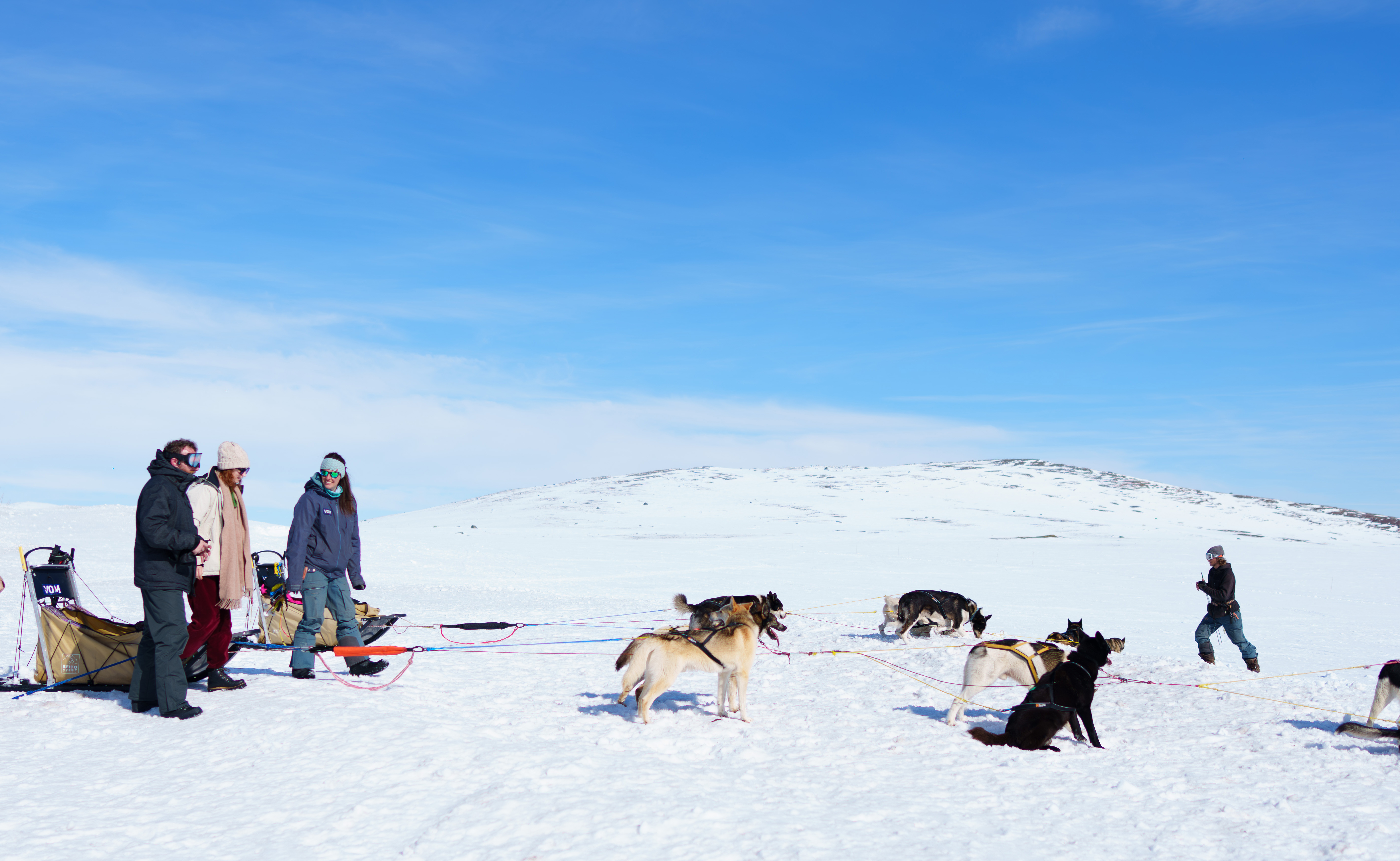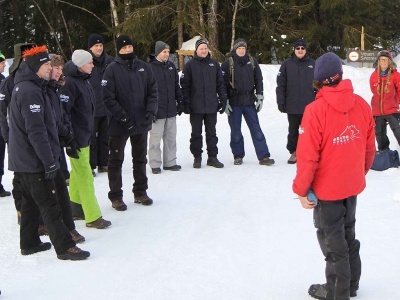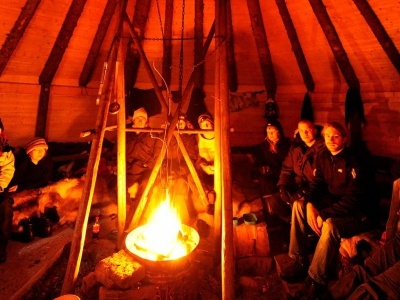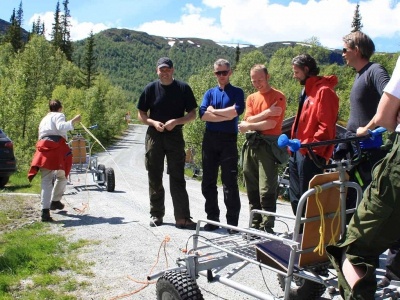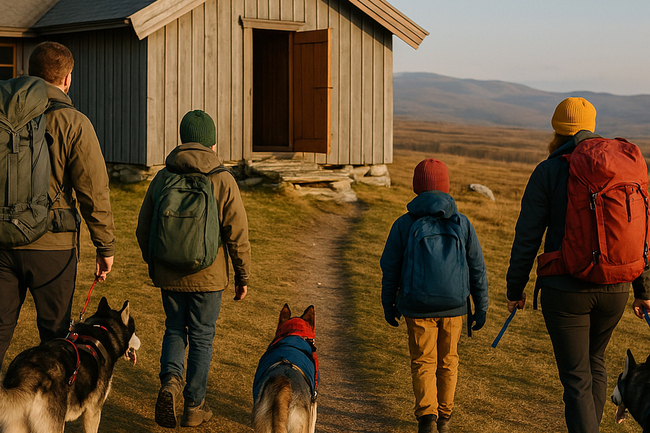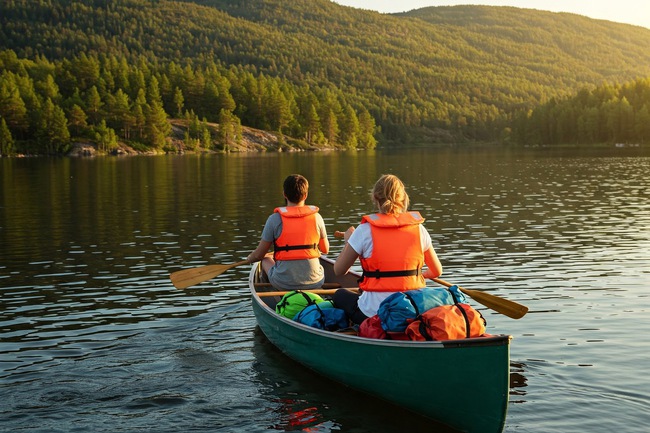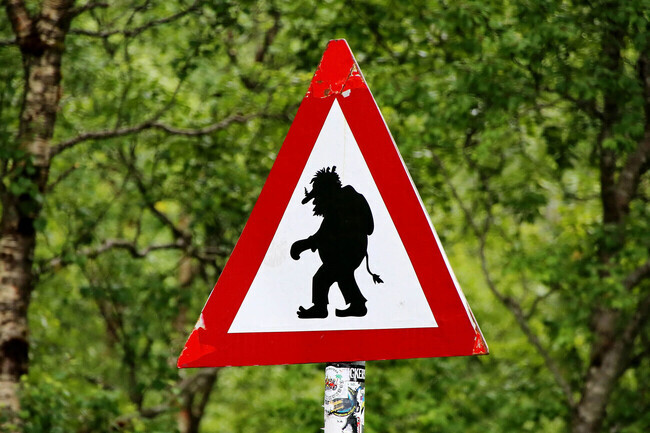How We Make Inclusion a Reality
Making outdoor activities accessible may seem ambitious—but in reality, it often comes down to just one thoughtful step...Whether it’s a dog sledding ride with an exoskeleton, guiding a visually impaired person to drive their own team, or helping an autistic guest feel safe and engaged, we’ve made it happen.
These aren’t exceptions—they’re examples of what’s possible when you embrace adaptability and we've decided to share them with you. If not to inspire, at least to explain that disability is no barrier to outdoor activities
Accessibility Begins with a Choice: Fair Over Easy
This is the mindset with which we approach accessibility.
We are about to celebrate 20 years of offering outdoor experiences to participants of all ages, from all backgrounds, and with all kinds of physical and mental conditions.
Of course, doing what’s right isn’t always the easiest path. It requires a solution-oriented mindset rather than one that dwells on the challenges.
The key concept? Adaptability. And honestly, it’s as simple as that.
What we’ve learned from working with participants who have specific needs boils down to this: the importance of adjusting our activities to allow them to take part—and to give them the chance to enjoy experiences that would otherwise be out of reach without just a little extra effort on our part.
For example, our solution to mobility challenges—difficulty sitting down, standing up, or transferring—was to use sleds with higher seating.
To better accommodate individuals with mental health conditions, we take time to talk before, during, and after the activity to ensure they feel supported and welcomed throughout the experience.
It’s that simple—and it makes all the difference.
When we receive a specific request—like the recent one involving a participant who uses an exoskeleton to walk—we focus first on the opportunity to grow as mushers.
Then we move on to identifying special needs and the related logistics in order to find the right balance for the participants, the dogs, and ourselves.
As with anything, experience builds confidence. The more we adapt, the more natural it becomes.
(If you wish to see what it looks like, you can watch Episode 3 of Team Pølsa on NRK TV where we brough disabled kids to the starting point of one of their greatest challenge in the show!)
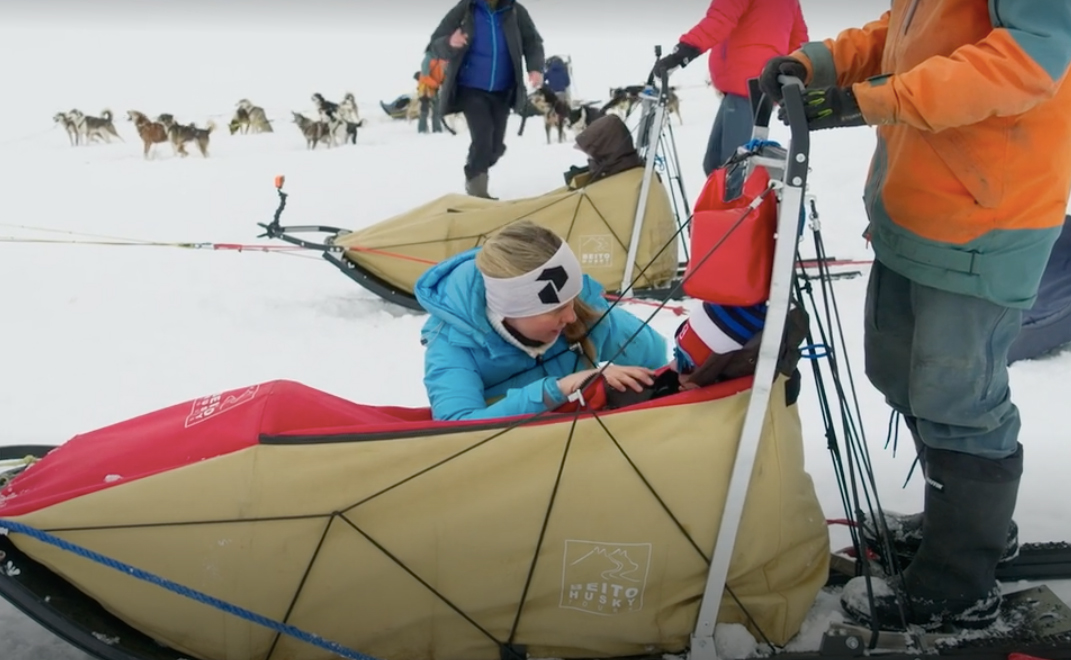
16 Years of Inclusive Adventure with Helsesportsenter
Back in 2007, we began a long-standing partnership with Helsesportsenter, a renowned rehabilitation center that entrusted us with the opportunity to offer its patients a truly unique experience.
Each week, as a voluntary break from their regular treatments, patients with a wide range of conditions were invited to ride in our sleds, driven by professional guides along a secure, nearby trail under optimal conditions.
Some participants returned year after year, while others encouraged friends and family to come experience it for themselves in a more immersive, private setting.
Our collaboration with Helsesportsenter lasted for 16 years—until budget cuts unfortunately brought the program to an end—and it enriched us far beyond what we had anticipated.
We encountered a wide array of disabilities and adapted our approach accordingly:
- Learning that a young autistic person can’t simply jump into a sled pulled by overly excited dogs, but instead needs time and structure to ease into the experience,
- Selecting the right type of sled to ensure a quadriplegic adult could ride in comfort and safety,
- Describing the landscape, anticipating turns, and maintaining a dialogue with visually impaired passengers to help them stay connected to their surroundings and understand what’s happening around them.
These adaptations may seem minor, but they are nothing compared to the joy and powerful emotions they create in our guests.
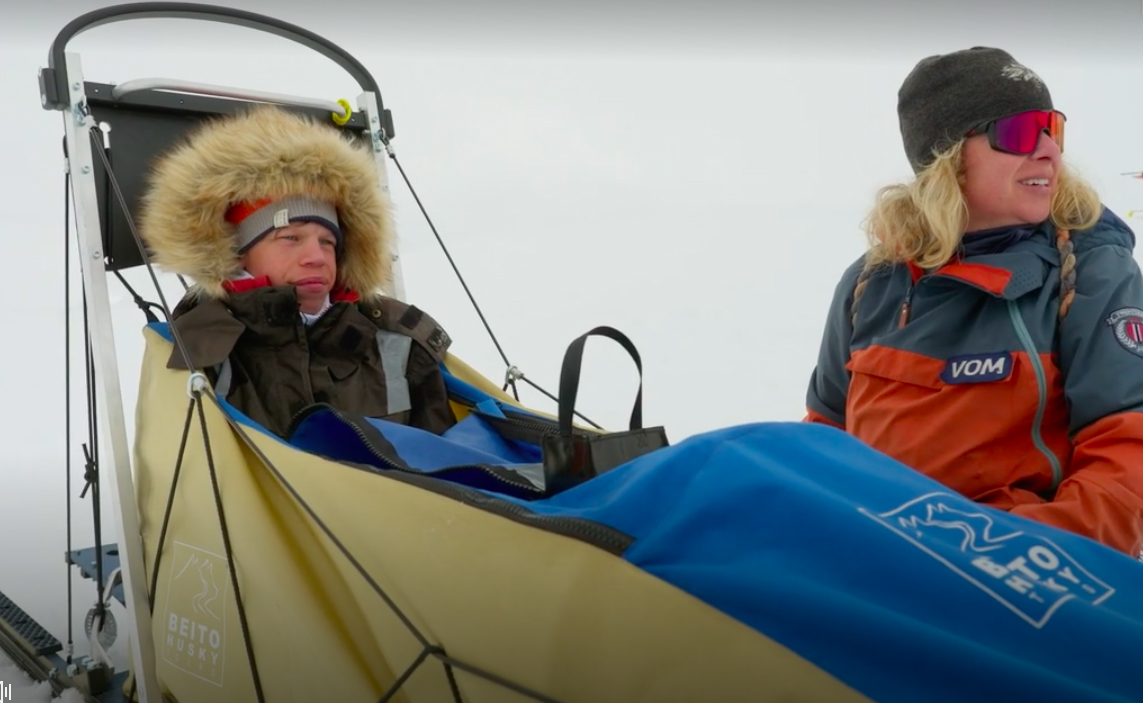
Shaping the Future
Tech-Driven Inclusion with SINTEF
This year, we were contacted by SINTEF, a company specializing in applied research, technology, and innovation, to help test their latest research project: a mobile application designed for people with visual impairments.
The project:
The goal for SINTEF’s researchers is to develop an app that would allow visually impaired individuals to take part in outdoor—and sometimes even extreme—activities with a certain level of autonomy.
The app:
Designed with two profiles—“guide” and “traveler”—the app allows for the creation of predefined routes, with GPS waypoints linked to specific audio cues. As the user enters the zone around each waypoint, the audio is triggered, providing real-time information tied to key moments along the route.
Our role:
We participated in the app’s testing phase.
After developing a suitable route with the project team, we entered information in three categories:
- Details about the sled tour itself (like left turns, slopes, obstacles), along with guidance on how to approach them as a passenger,
- Information about the sled dogs and their behaviors,
- Descriptions of the landscape and notable landmarks.
The second phase involved field testing the app with six visually impaired guests—and it was a resounding success! Some participants even felt confident enough to try taking the driver's position themselves.
Their reactions exceeded all expectations. The app made the experience smoother for everyone—participants and guides alike. It enhanced communication, strengthened our connection, and opened up dialogue in an incredibly natural and fluid way.
Participants’ reviews :
«It was very nice, I enjoyed it very much. The whole experience is quite gratifying.
An enjoyable experience. Unusual.»
«It (to be able to drive) was very nice. I liked it very much, it was good. Because it
makes you get a whole idea of how is the whole situation. Because when they
explain you ”Oh yes, if they are going too fast, we need to brake down here” You
can get an idea but it’s not the same when you are actually doing the action.
So it was very good.»
Because nothing is ever too complicated when it comes to sharing a passion, a unique experience, or powerful emotions, we will continue our work to make outdoor activities more accessible.
If you're looking to make your outdoor offer more inclusive—or simply want to learn more about how small adaptations can create unforgettable experiences—we’d love to connect. Let’s make the outdoors truly open to all.

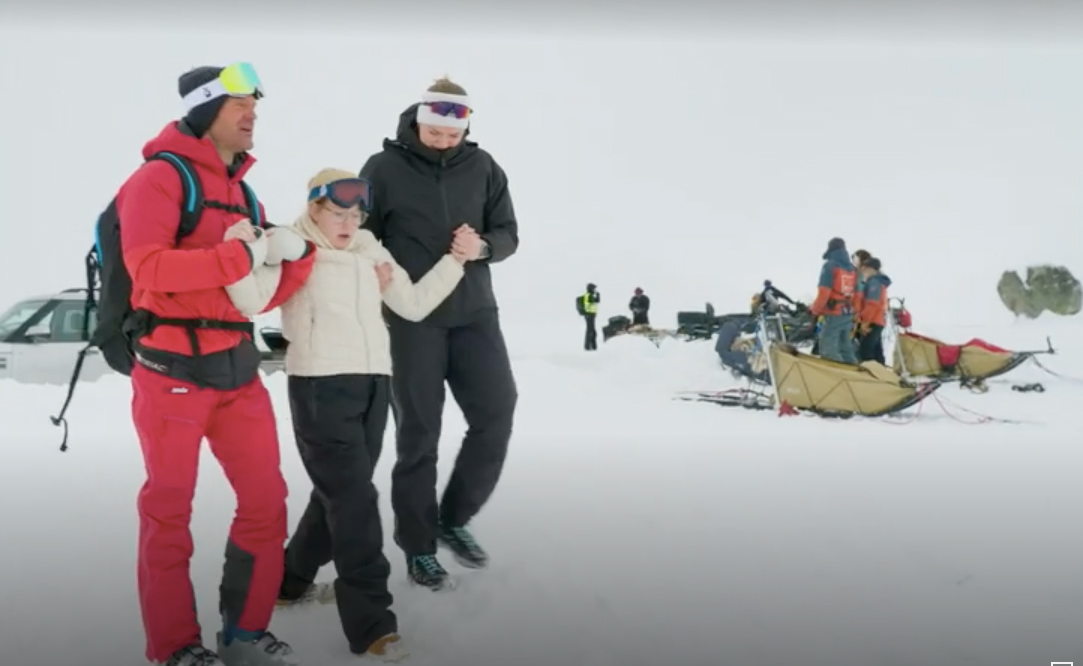
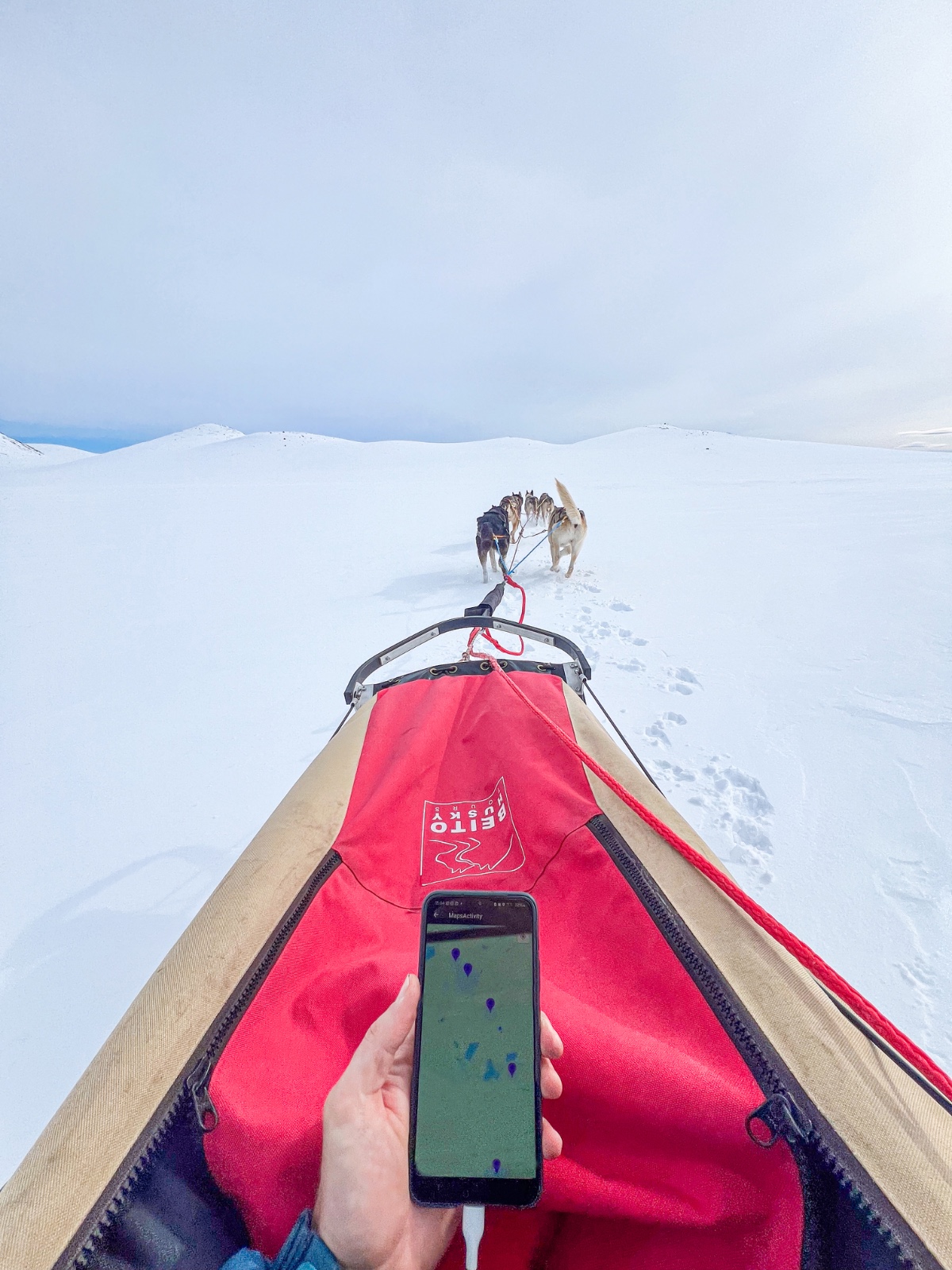
.jpeg)
